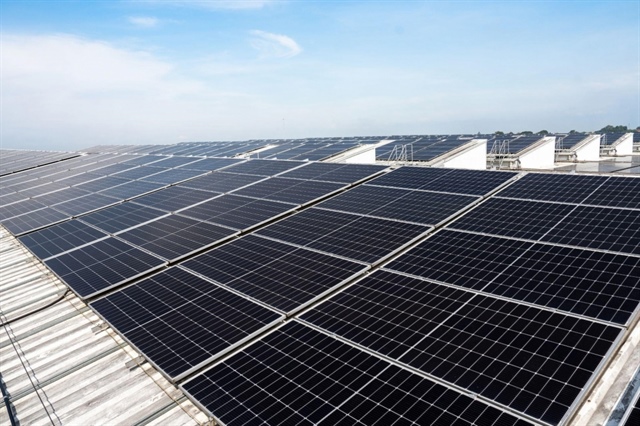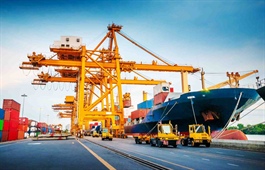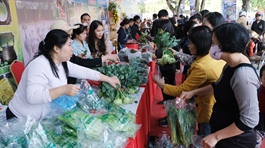Exports set to exceed target in 2021
Exports set to exceed target in 2021
Despite a negative impact caused by the COVID-19 pandemic, the country's exports have scored a success this year with 11-month export revenues reaching approximately US$300 billion.

The figures are expected to top $335 billion by year-end, representing a sharp rise of 18.6 per cent year-on-year and surpassing the target of 4 to 5 per cent set for 2021
Total trade turnover is estimated at $667.5 billion, up 22.4 per cent compared with 2020.
Notably, 34 commodities that fetched over $1 billion each made up more than 93 per cent of export revenue in total.
In 2021, computers, electronics and components topped $100 billion in trade for the first time. Meanwhile, processing and manufacturing industries continued to be the driving force behind economic growth, accounting for more than 86 per cent of export turnover.
Tran Thanh Hai, deputy director of the Import-Export Department, noted that textile and footwear industries in southern provinces were severely affected by prolonged lockdowns from July to September, but quickly took off in the last two months. They also made a substantial contribution to export growth.
Although the agricultural sector represented less than 15 per cent of the country’s exports, it fared well during the year.
Agricutural-forestry-fishery exports brought in $43.5 billion.
The figures are forecast to hit a yearly turnover of roughly $47 billion, exceeding the set target by about $5 billion.
In regard to key farm produce, senior trade expert Pham Tat Thang remarked that Vietnamese lychees had successfully made an inroad into high-end markets for the first time this year. Likewise, Vietnamese rice has also made a name for itself and yielded high export value thanks to brand promotion.
Experts believe the steady growth in exports can be attributed to favourable conditions created by free trade agreements (FTA) and national efforts to hold ground in its traditional export markets such as the United States, China, the European Union and ASEAN.
The US continued to be the country's largest export partner with an estimated annual growth of 27.5 per cent.
Vietnamese firms have turned new-generation FTAs, including CPTPP, EVFTA and UKVFTA, to their advantage and managed to reach new markets.
The Ministry of Industry and Trade said that exports to the EU had risen 10.6 per cent and to the UK by 14.5 per cent since the EVFTA and UKVTA came into force.
The same trends can also be seen in trade activities between Viet Nam and CPTPP markets, which include Canada, Mexico and Peru.
Exports to these three countries continued to enjoy high rates of growth with 17.6 per cent for Canada, 43.9 per cent for Mexico and 84.3 per cent for Peru.
The robust growth in exports was also evidence of the Government’s efforts in bilateral and multilateral trade negotiations.
The success of these negotiations has led to the lifting of many trade barriers, helping Vietnamese products, notably agrico-fishery, to gain ground in even highly demanding markets.
Overall, the export sector has successfully weathered the pandemic storm and came out well with trade balance moving from deficit at the end of the third quarter to surplus after November, amounting to an estimated total surplus of $3 billion for the whole year.
Deputy Minister of Industry and Trade Tran Quoc Khanh stressed that the country's achievements in trade could be attributed to the continuity of production and export activities, especially at major industrial complexes such as Bac Ninh, Bac Giang and Thai Nguyen, amid the complicated development of COVID-19.
Khanh said another contributing factor was the country’s efforts to keep the circulation of goods uninterrupted and keep major export gateways safe during social distancing.
Despite bright spots in the overall picture, it is undeniable that the COVID-19 pandemic has been posing real threats to the export sector, including supply chain disruption and price volatile fluctuation.
To keep these threats at bay, local firms need to pay closer attention to risk management and trade remedy cases to proactively respond.
Some other export-related issues also need to be put high on the agenda as they are obstacles to a more sustainable export growth.
These issues include the high contributing proportion of foreign invested enterprises (70 per cent) in the country’s total exports, and difficult-to-meet standards and requirements specified by a new-generation of FTAs, and persistent services deficits.



























